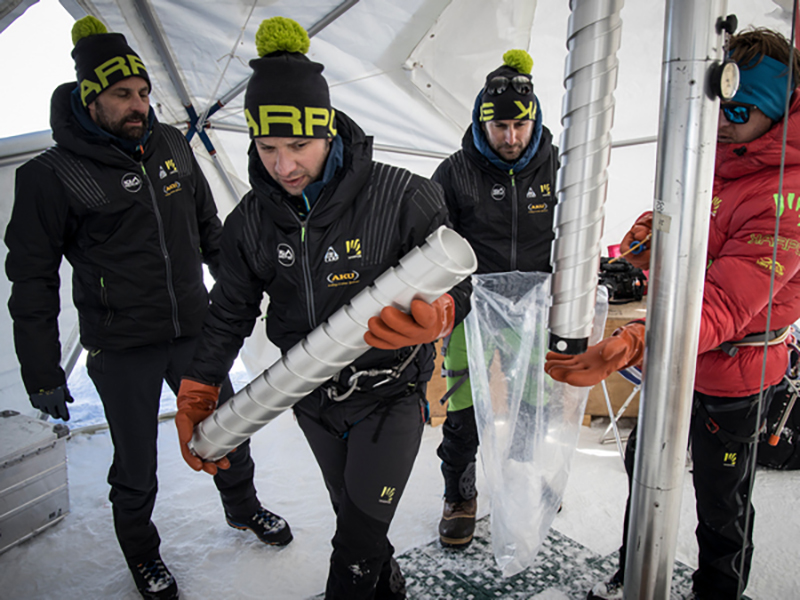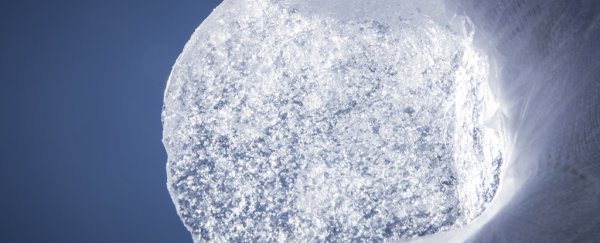It's not just seeds that are being stashed away at the poles – scientists are also preserving stacks of ancient ice for future research, and the oldest ice in the Alps region has now been successfully extracted, ready for storage in Antarctica.
What makes saving and storing this ice so important is the climate history it records. The ice cores from the Alps date back as far as 10,000 years ago, giving researchers an invaluable insight into how the environment has changed over that time span.
The move is part of an ongoing international project called Ice Memory, which aims to preserve these natural artifacts before global warming and ice melt cause them to disappear. The Alps extraction is a significant moment for the project.
 (Ca' Foscari University of Venice)
(Ca' Foscari University of Venice)
"The mission was a success: the team obtained two ice cores over 80 meters [262 feet] deep from a very important site, which contains information on the climate of the last 10,000 years," says Carlo Barbante, a professor of analytical chemistry from the Ca' Foscari University of Venice in Italy.
"The team worked well despite the harsh weather conditions, with strong gusts of wind and snow. Now this precious archive of the climate history of the Alps will be preserved for the future."
The ice extraction took researchers five days at a height of 4,500 meters (14,764 feet) at the Colle Gnifetti glacier, with a total of four ice cores retrieved. The team was based at the 128-year-old Capanna Margherita scientific research camp, the highest in Europe.
The glacier the ice was taken from is the second largest in the Alps region, with an overall area of about 40 square kilometers (15.4 square miles). Scientists estimate that since the middle of the 19th century, the glacier has lost about 40 percent of its total area.
In other words, these tubes of ice – thought to have been untouched by melting for ten centuries – have been extracted just in time. This is the third mission that Ice Memory has carried out in the Alps.
"If we lost archives such as this one, we would lose the memory of how humankind has altered the atmosphere," says Fabio Trincardi, the director of the Department of Earth System Science and Environmental Technologies at the Italian National Research Council.
"Let us try to preserve it for the future generations who will study it when we are no longer here."
Launched in 2015 by French, Italian and Swiss glaciologists, Ice Memory has partnered with scientists and research groups from around the world in an attempt to preserve ice cores for future study, with subsequent research available in an open access database.
The organization predicts that by the end of the century, we'll have no more glaciers left below 3,500 meters (11,483 feet) in the Alps and 5,400 meters (17,717 feet) in the Andes. That's a lot of scientific evidence that could be lost to global warming.
By 2022, it's hoped the Antarctica snow cave storage facility will be completed, located at the French-Italian Concordia research station. With an average temperature of minus 54°C (minus 65°F), the cave will require no energy supply and should be safe from future warming across the planet.
"Our climate is in a state of emergency," says Tiziana Lippiello, Rector at the Ca' Foscari University of Venice. "In order to face this crisis, we need to understand the causes and find possible solutions, so research and teaching are necessary."
You can learn more at the official Ice Memory website.
